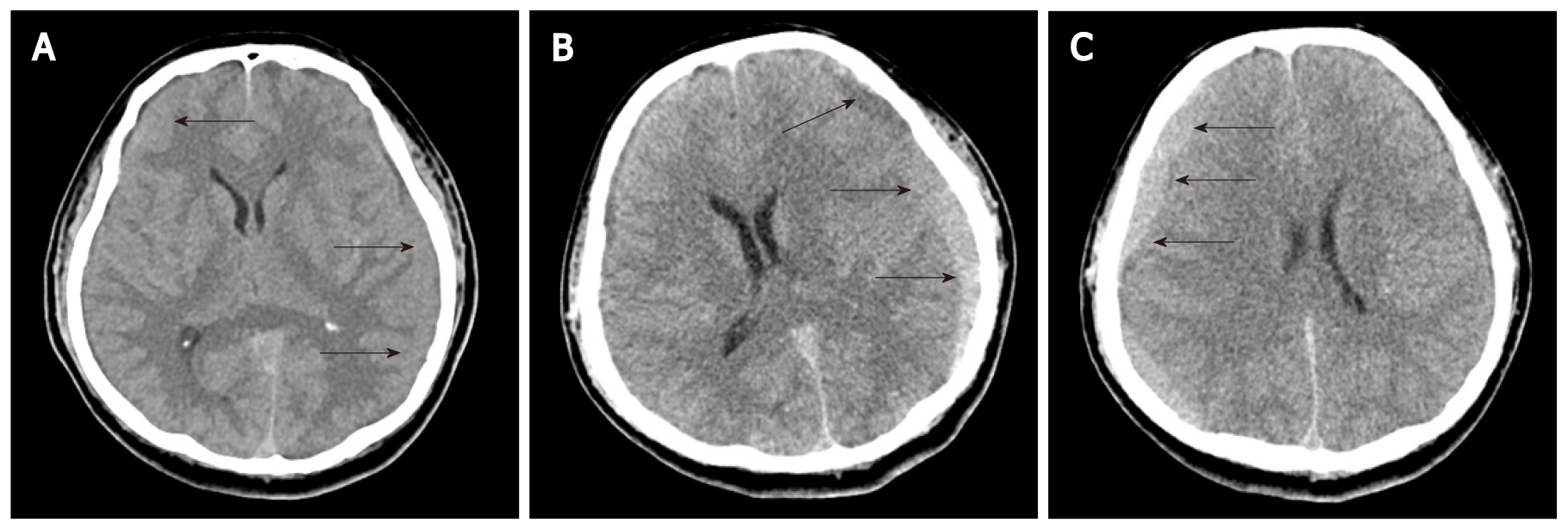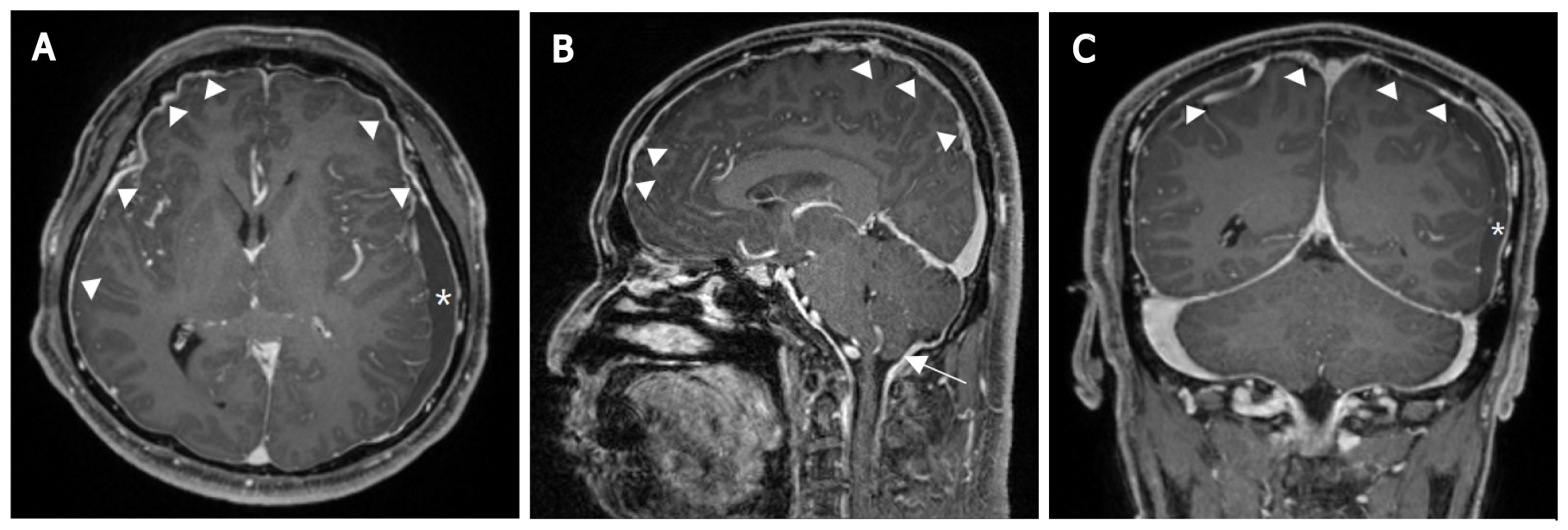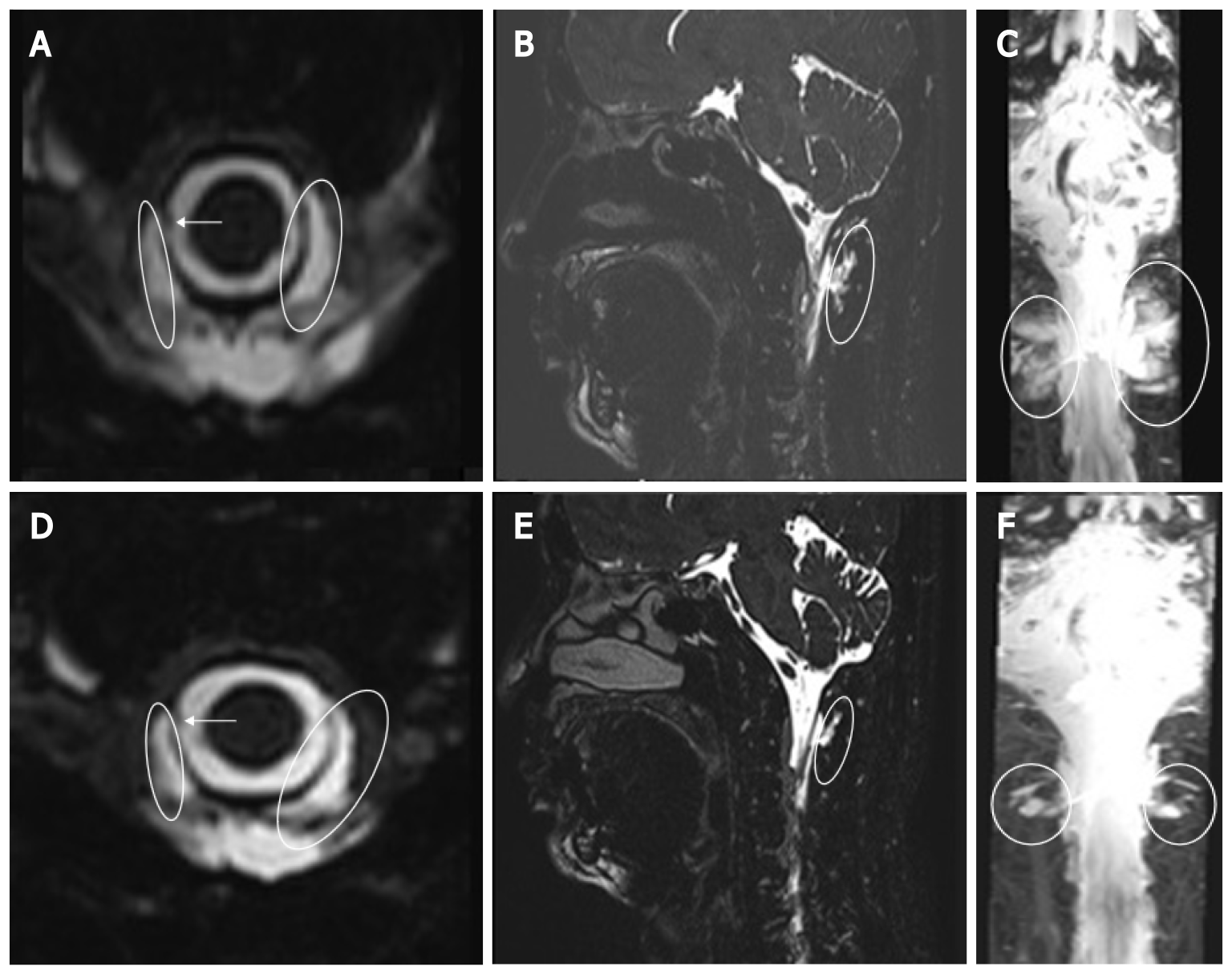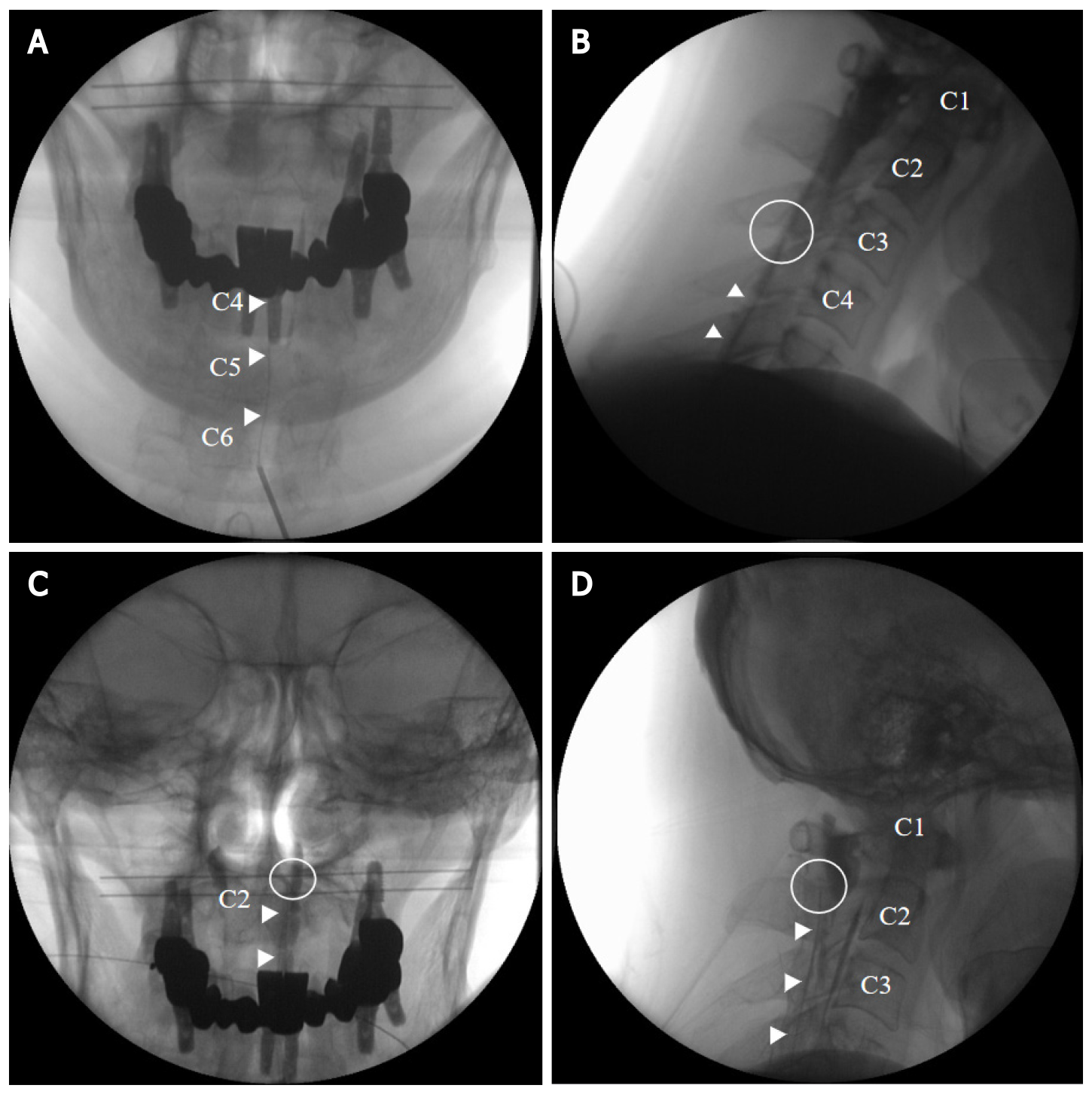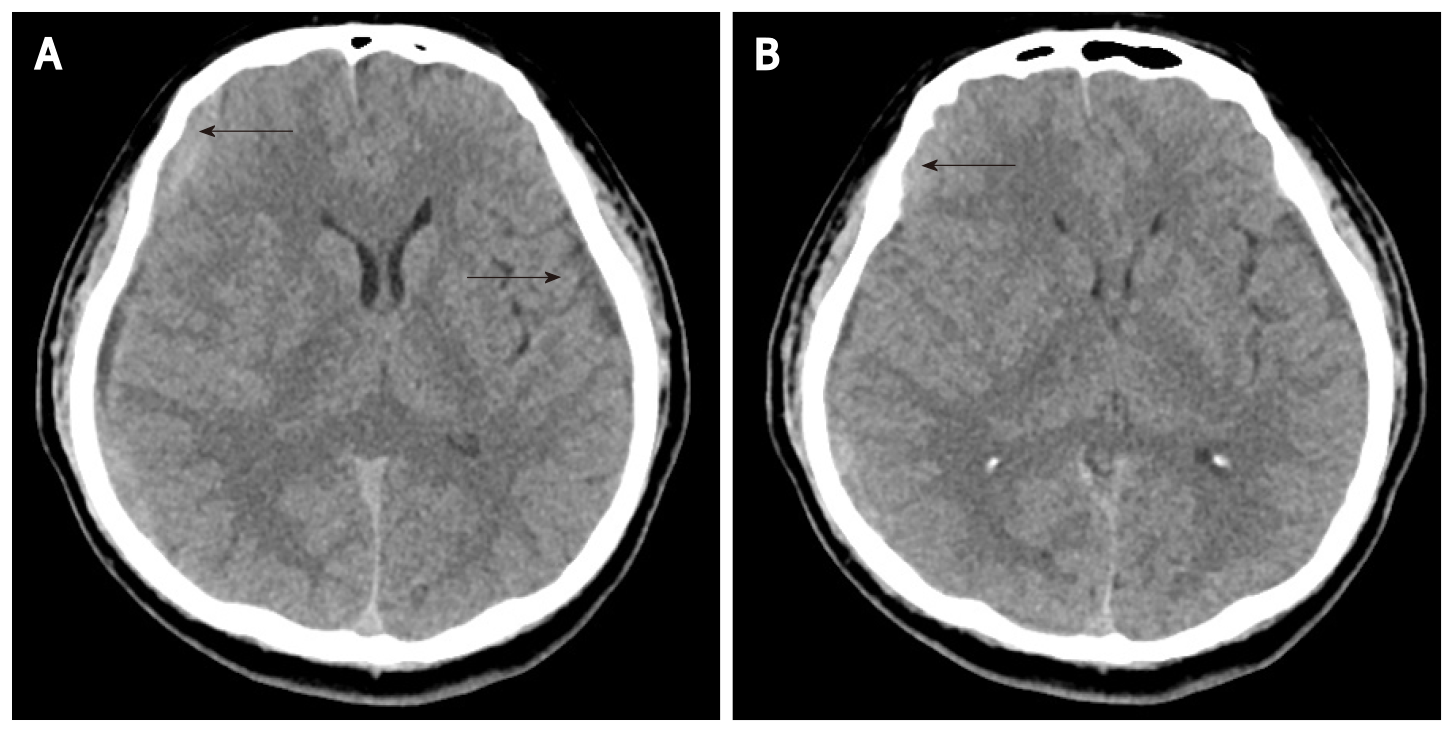Copyright
©The Author(s) 2022.
World J Clin Cases. Jan 7, 2022; 10(1): 388-396
Published online Jan 7, 2022. doi: 10.12998/wjcc.v10.i1.388
Published online Jan 7, 2022. doi: 10.12998/wjcc.v10.i1.388
Figure 1 Axial computerized tomographic scanning.
A: Subacute to chronic stage of bilateral subdural hematoma (SDH); B: Increased attenuation of SDH along the left frontoparietotemporal cerebral convexities; C: Re-increased amount of SDH along the right frontoparietotemporal cerebral convexities. Black arrows: SDH.
Figure 2 Magnetic resonance T1-weighted imaging.
A: Axial scanning showing a large amount of multistage subdural hematoma (SDH) in the left cerebral convexity and dural enhancement in both cerebral convexities (especially prominent right cerebral convexities); B: Sagittal scanning showing dural enhancement and mild sagging appearance of the brain; C: Coronal scanning showing a large amount of multistage SDH in the left cerebral convexity and dural enhancement in both cerebral convexities. Asterisk: SDH; Arrowhead: Dural enhancement; White arrow: Sagging appearance of the brain.
Figure 3 Magnetic resonance myelography.
A-C: Axial, sagittal, and coronal scanning images showing focal dural sac defect at the right C1/2 level and cerebrospinal fluid (CSF) collection in bilateral and posterior C1/2 epidural space; D-F: Axial, sagittal, and coronal scanning images showing focal dural sac thinning at the right C1/2 level and decreased size of CSF accumulation. White arrow: Dural sac defect; Oval: CSF accumulation.
Figure 4 C-arm imaging.
A and B: Anteroposterior and lateral views showing an epidurogram during initial targeted cervical epidural blood patch; C and D: Anteroposterior and lateral views showing an epidurogram during repeat targeted cervical epidural blood patch. Arrowhead: Catheter; Circle: Catheter tip.
Figure 5 Follow-up axial computerized tomographic scanning.
A: Reduced attenuation of subdural hematoma (SDH) along the left frontoparietotemporal cerebral convexities; B: Reduced amount of SDH along the right frontoparietotemporal cerebral convexities. Black arrow: SDH.
- Citation: Choi SH, Lee YY, Kim WJ. Epidural blood patch for spontaneous intracranial hypotension with subdural hematoma: A case report and review of literature. World J Clin Cases 2022; 10(1): 388-396
- URL: https://www.wjgnet.com/2307-8960/full/v10/i1/388.htm
- DOI: https://dx.doi.org/10.12998/wjcc.v10.i1.388









